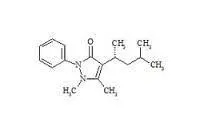- Afrikaans
- Albanian
- Amharic
- Arabic
- Armenian
- Azerbaijani
- Basque
- Belarusian
- Bengali
- Bosnian
- Bulgarian
- Catalan
- Cebuano
- Corsican
- Croatian
- Czech
- Danish
- Dutch
- English
- Esperanto
- Estonian
- Finnish
- French
- Frisian
- Galician
- Georgian
- German
- Greek
- Gujarati
- Haitian Creole
- hausa
- hawaiian
- Hebrew
- Hindi
- Miao
- Hungarian
- Icelandic
- igbo
- Indonesian
- irish
- Italian
- Japanese
- Javanese
- Kannada
- kazakh
- Khmer
- Rwandese
- Korean
- Kurdish
- Kyrgyz
- Lao
- Latin
- Latvian
- Lithuanian
- Luxembourgish
- Macedonian
- Malgashi
- Malay
- Malayalam
- Maltese
- Maori
- Marathi
- Mongolian
- Myanmar
- Nepali
- Norwegian
- Norwegian
- Occitan
- Pashto
- Persian
- Polish
- Portuguese
- Punjabi
- Romanian
- Russian
- Samoan
- Scottish Gaelic
- Serbian
- Sesotho
- Shona
- Sindhi
- Sinhala
- Slovak
- Slovenian
- Somali
- Spanish
- Sundanese
- Swahili
- Swedish
- Tagalog
- Tajik
- Tamil
- Tatar
- Telugu
- Thai
- Turkish
- Turkmen
- Ukrainian
- Urdu
- Uighur
- Uzbek
- Vietnamese
- Welsh
- Bantu
- Yiddish
- Yoruba
- Zulu
ធ្នូ . 13, 2024 02:12 Back to list
Commonly Prescribed Antibiotics in Veterinary Practice for Animal Health and Treatment
Commonly Used Antibiotics in Veterinary Medicine
Antibiotics are essential tools in veterinary medicine, playing a crucial role in the treatment and prevention of bacterial infections in animals. Their use not only enhances animal health but also contributes to food safety and public health by controlling zoonotic diseases. The following are some of the most commonly used antibiotics in veterinary practice, along with their applications, benefits, and concerns.
1. Penicillins
Penicillins, such as amoxicillin, are widely utilized due to their effectiveness against a variety of bacterial infections. They are particularly useful in treating respiratory infections, skin infections, and urinary tract infections in both small animals (dogs and cats) and livestock (such as cattle and pigs). Penicillins are generally safe and well-tolerated, making them a first-line choice for many veterinarians. However, the development of resistance among some bacteria has prompted the need for judicious use to maintain their efficacy.
Tetracyclines, including oxytetracycline and doxycycline, have a broad spectrum of activity against both gram-positive and gram-negative bacteria. These drugs are commonly used in treating respiratory diseases, skin infections, and some types of tick-borne illnesses. They are also frequently employed in livestock for managing diseases like pneumonia and enteritis. That said, the tetracycline class can have adverse effects on bone development in young animals and may lead to the discoloration of teeth, so careful consideration is necessary when prescribing.
3. Macrolides
Macrolides, such as erythromycin and azithromycin, are another important class of antibiotics. They are particularly effective against gram-positive bacteria and are often used in cases of soft tissue infections and respiratory diseases. In livestock, macrolides are utilized to treat respiratory diseases, especially in cattle and pigs. While macrolides are valuable for treating severe infections, their use must be balanced with the risk of developing resistance, particularly in the context of veterinary and human health.
most commonly used antibiotics in veterinary medicine

4. Sulfonamides
Sulfonamides are often employed in veterinary medicine for their versatility and efficacy against a range of infections. They are used to treat urinary tract infections, respiratory diseases, and enteric infections in animals. Sulfonamides can be combined with other antibiotics to enhance their effectiveness and reduce resistance risks. However, they may cause allergic reactions in some animals, necessitating careful monitoring during treatment.
5. Fluoroquinolones
Fluoroquinolones, such as enrofloxacin and marbofloxacin, are powerful antibiotics used in veterinary medicine, particularly for treating complicated infections. They are effective against a wide range of bacteria, including those resistant to other antibiotics. Fluoroquinolones are typically reserved for severe infections due to concerns over developing resistance and their impact on public health. These drugs are often used in small animals but are also applied in livestock under strict veterinary guidance.
Concerns and Responsible Use
The increasing prevalence of antibiotic resistance is a critical issue in both human and veterinary medicine. The use of antibiotics in animals contributes to the emergence of resistant bacterial strains, which can be transmitted to humans via direct contact or through the food chain. Therefore, veterinarians and animal owners must practice responsible antibiotic usage, prioritizing guidelines such as using antibiotics only when necessary, completing prescribed courses, and avoiding the use of antibiotics for growth promotion in livestock.
Conclusion
Antibiotics are invaluable in maintaining animal health and welfare in veterinary practice. However, with their significant benefits come the responsibility to use them judiciously to ensure they remain effective in treating infections. Ongoing education and adherence to veterinary guidelines are essential to combat antibiotic resistance and safeguard both animal and human health. By fostering responsible antibiotic use, the veterinary community can help protect the efficacy of these critical medications for generations to come.
-
Guide to Oxytetracycline Injection
NewsMar.27,2025
-
Guide to Colistin Sulphate
NewsMar.27,2025
-
Gentamicin Sulfate: Uses, Price, And Key Information
NewsMar.27,2025
-
Enrofloxacin Injection: Uses, Price, And Supplier Information
NewsMar.27,2025
-
Dexamethasone Sodium Phosphate Injection: Uses, Price, And Key Information
NewsMar.27,2025
-
Albendazole Tablet: Uses, Dosage, Cost, And Key Information
NewsMar.27,2025













